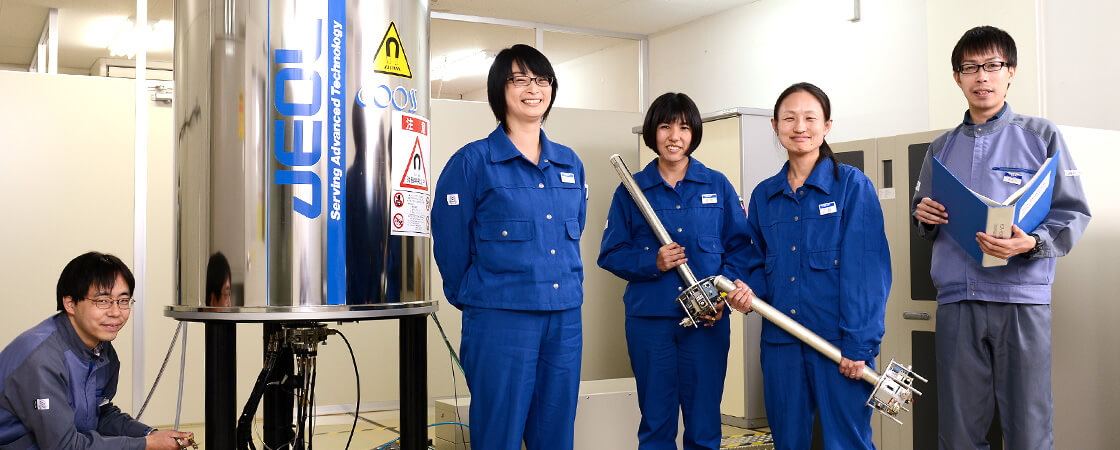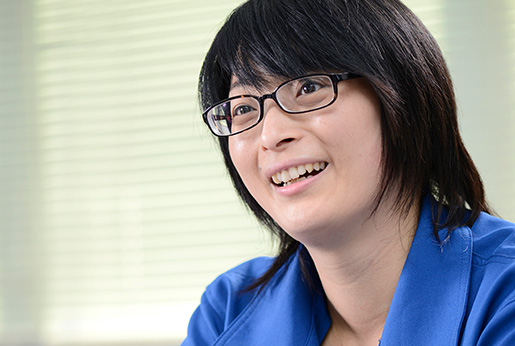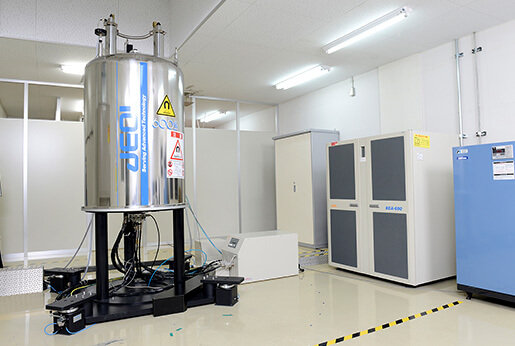Toray Research Center, Inc. (Shiga)
Strongly support the state-of-the-art manufacturing as a partner of research development
Toray Research Center (hereinafter, TRC) is a company to provide technical support for scientific analysis and physicality evaluation, problem-solving with the request from companies, and universities. In 1978, they became an independent company from the analysis group of R&D division of Toray Industries, inc. From this background, they are good at the analysis of polymer and macro molecules, and they also cover a wide range of fields such as semiconductors and displays, printers, batteries, energy devices, automobiles, industrial materials, environment, medical drugs, and bio.

Hope to contribute to the society with advanced technology

Yoko Sakiyama, Maneger
Materials science laboratories, 2nd materials science laboratory
With the theme “Contributing to the society through advanced technologies”, TRC has engaged in its mission for more than 40 years’ of history. Their technology is highly reputed especially in the chemistry field. As an analytical company, they accept analysis request in finding out the cause of trouble occurred during the production process or during use of a product, and also they continuously engage in analysis from the research and development stage as a partner.
As they often handle materials which are hard to be dissolved in solvent, they have many scenes to use solid-state NMR. The analysis of a lithium ion battery is one of them. Inside the electrode of a battery, lithium component usually exists as a lithium ion. However, once it is deteriorated, the lithium ion is transformeds into metallic lithium by receiving electrons, thus it changes into quite highly reactive and hazardous lithium. It is solid-state NMR only which can judge whether the analysis target is a lithium ion, or metallic lithium. In addition, solid-state NMR excels at the quantitative analysis to see what percentage is the deteriorated element.
Still, identification of the cause behind the deterioration is not possible only by NMR. They combine various analytical methods to identify which part of the battery, such as a negative electrode, a positive electrode and separator, is deteriorated. Therefore, TRC makes close contact with groups which are divided by an analytical method, and they offer the best analytical methods to their clients. Other than this, TRC carried out various analyses of diamond-like carbon which is usually applied as hard and chemical resistant coatings to other materials, and fuel cells. They are serving as an important partner in advanced manufacturing.
New horizon opened-up by 1 mm HXMAS probe

Including JNM-ECA600, 5 units of JEOL’s super conductive type NMR systems have been used by them.
In 2012, TRC introduced a probe with a very narrow sample tube of 1mm outer diameter to overcome the need of large sample volume, which was the critical issue of solid NMR. The necessary sample volume is only 0.8 μl, which is one-sixtieth compared with 49 μl of a conventional 3.2mm type. Moreover, because the world’s best (then in 2012) rotation per second of 80,000 was realized*, the improvement of sensitivity and resolution has been achieved at the same time. The range of analytical target of solid NMR has greatly expanded.
For example, they had received a request to find out the cause of the brightness degradation of an LED. However, the volume of materials used in an LED used to be too small to be measured by using solid NMR. However, with the advent of 1 mm HXMAS probe, deterioration of LED was added into their business. “Depending on the material, there are many samples where only the surface, or only a part of it is deteriorated. Owing to the 1mm probe, we are now able to observe the NMR spectra of a small amount of the deteriorated part. It is great advancement for us.” said Ms. Sakiyama brightly, who is in charge of the solid NMR.
In the future, TRC is planning to focus on medical materials starting with polymeric materials used for artificial dialysis treatment, and green chemistry where cellulose and lignin in plants are used as raw materials. As it is a new field, the analytical method has not been established yet. So, they are hoping to jointly develop an evaluation procedure in collaboration with universities.
-
JEOL RESONANCE succeeded in developing a probe responding to 0.75mm sample tube up to date. Sample volume of 0.29μl, the world’s highest spinning speed of 110,000 spins per second has been achieved. In the future, we are going to support sophisticated analysis・physicality evaluation through development of higher performance probe and NMR system.
Contacts
JEOL provides a variety of support services to ensure that our customers can use our products with peace of mind.
Please feel free to contact us.
